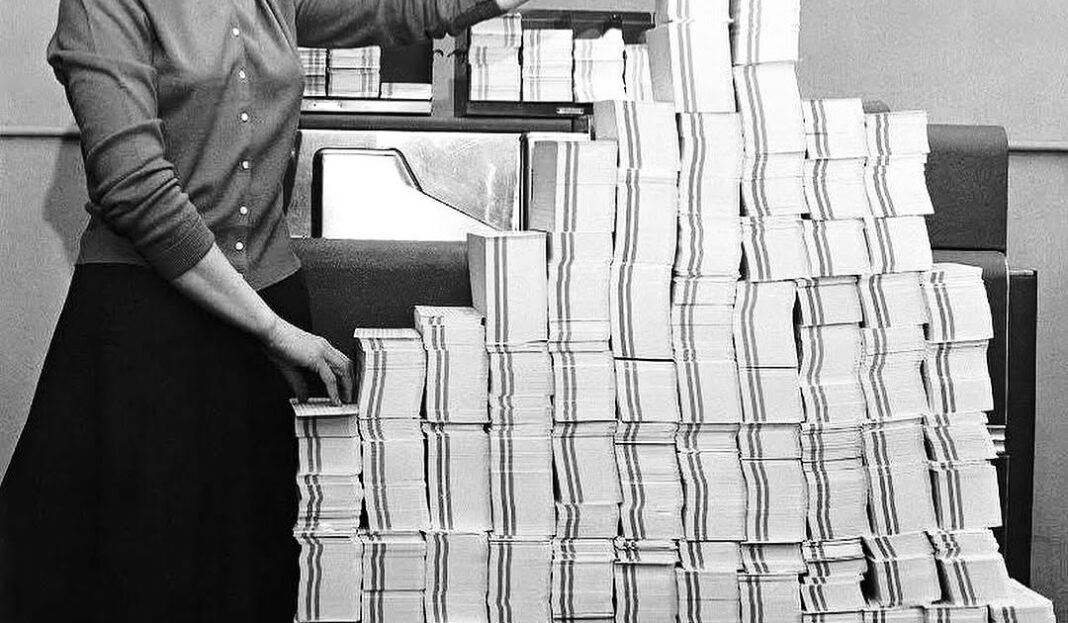This method of data storage and retrieval was primarily used in large mainframe computers, which dominated computing in the 1960s. These computers were massive, occupying entire rooms, and were primarily used by government agencies, large corporations, and academic institutions. The punched card system, developed by Herman Hollerith in the late 19th century, was essential for tasks like census data processing and later expanded into general data storage and software development. The transition from these physical cards to magnetic tape and hard drives marked a significant step in the evolution of computer technology, with the 1960s acting as a pivotal decade in the development of modern computing.
The image of 62,500 punched cards neatly stacked in rows serves as a reminder of the immense physicality involved in early computing. While today’s digital landscape is built on cloud storage, high-speed processors, and wireless networks, the 1960s were a time of trial and error, where each byte of information came at a high cost in terms.


